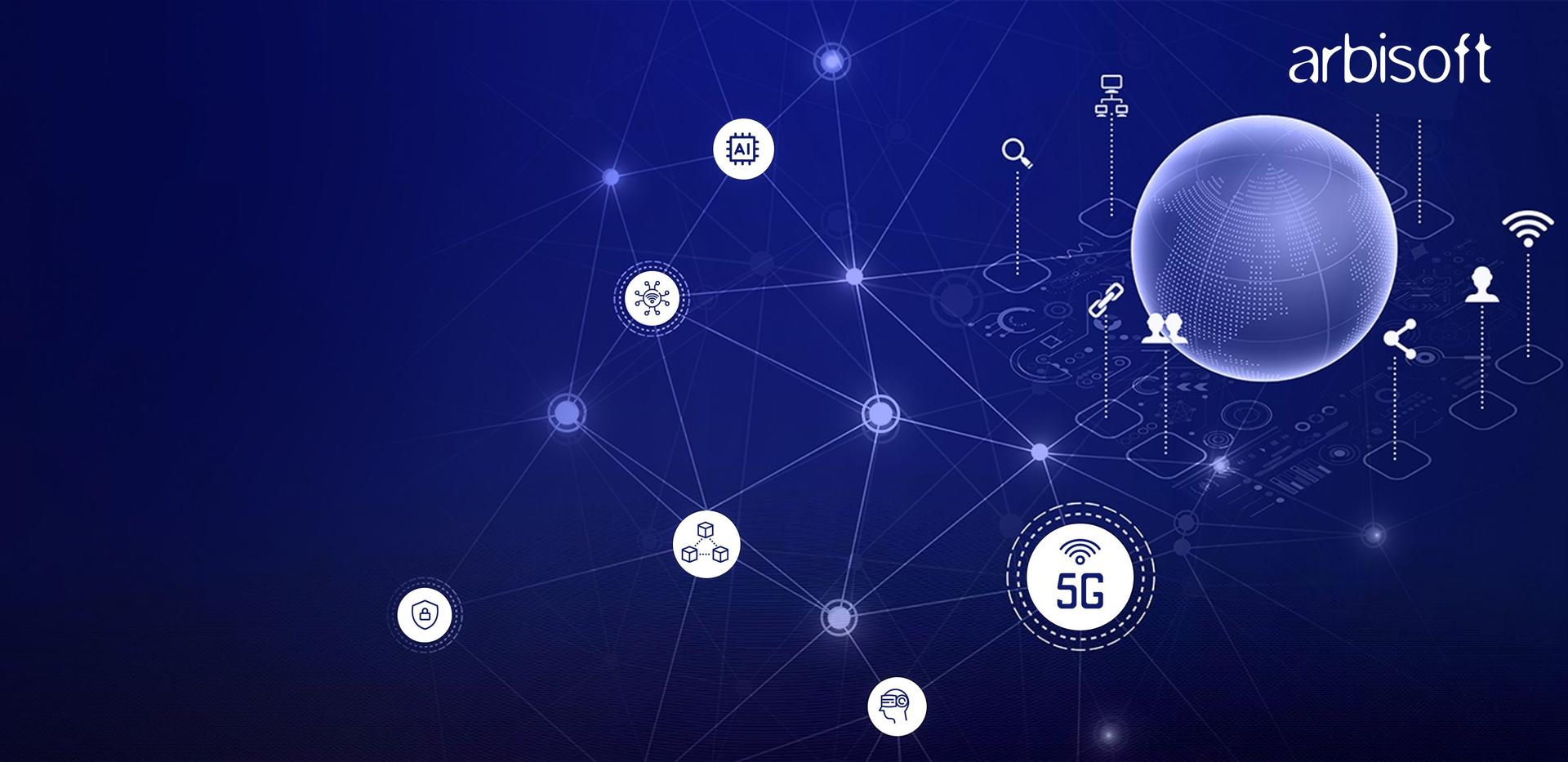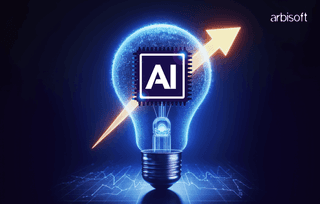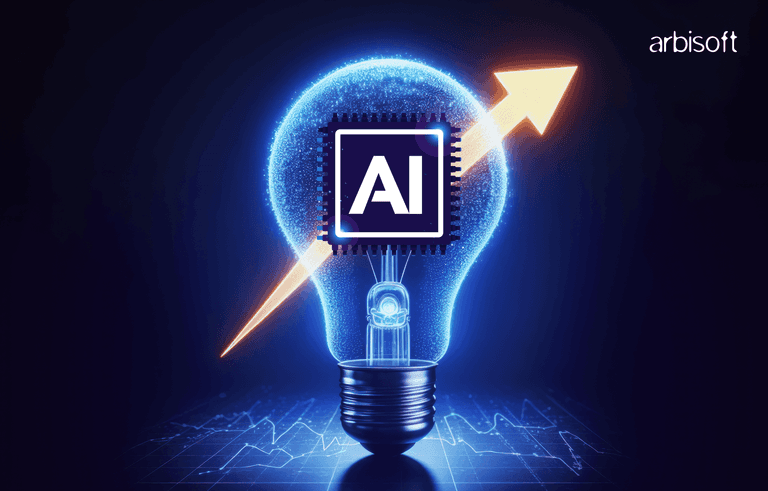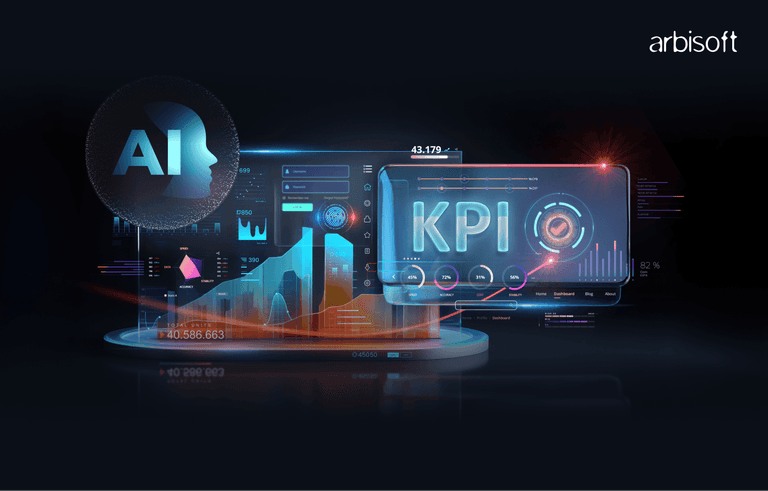We put excellence, value and quality above all - and it shows




A Technology Partnership That Goes Beyond Code

“Arbisoft has been my most trusted technology partner for now over 15 years. Arbisoft has very unique methods of recruiting and training, and the results demonstrate that. They have great teams, great positive attitudes and great communication.”
Pioneering the Future: How Emerging Technologies Drive Digital Transformation

Today, a number of emerging technologies are taking center stage, transforming industries, and presenting businesses with a promising future in the fast-paced world of digital transformation. These technologies aren't fleeting trends but powerful catalysts for innovation and efficiency. In this engaging exploration, we'll deep-dive into the impact of the top nine transformative technologies that are fueling the digital revolution.
The influence of these emerging technologies on digital transformation is profound, extending far beyond mere buzzwords. They're reshaping the fabric of our daily lives, redefining how we work, and enhancing how we play. More importantly, they're revolutionizing the way businesses operate. Those enterprises that strategically embrace and leverage these technologies are poised for success in the digital age.
How Emerging Technologies Propel Digital Transformation
The advantages of these technologies in digital transformation are multifold. They drive innovation by automating tasks and processes, optimizing operations, ensuring transparency and security in transactions, enhancing connectivity and communication, and providing immersive experiences. These emerging technologies aren't just dazzling innovations; they come with a host of tangible advantages that fuel the digital transformation revolution. Let's explore the myriad benefits they bring to the table.
1. Artificial Intelligence (AI)
Leading the charge in the digital transformation frontier, AI is a game-changer cutting across various industries. By enabling machines to replicate human intelligence using techniques such as machine learning and natural language processing, AI automates tasks, offers data-driven insights, and takes personalization to new heights.
Imagine you have a super-smart assistant that can learn from everything it does. AI is like that helper for businesses. It helps companies in various fields work better and smarter. Here’s how:
Automation and Efficiency
AI automates repetitive tasks, allowing employees to focus on more strategic activities. It enhances operational efficiency by handling high-volume, mundane tasks with precision and speed.
Data-Driven Insights
AI processes vast amounts of data to generate actionable insights. This helps businesses to pair it with business intelligence solutions to make informed decisions, optimize processes, and tailor offerings to individual customer preferences.
Personalization
AI-powered recommendation engines, like those used by Netflix and Amazon, provide personalized content and product suggestions, boosting customer engagement and sales.
Cost Reduction
By automating processes and predictive maintenance, AI reduces operational costs and prevents costly downtimes. For example, AI-driven predictive maintenance in manufacturing minimizes equipment failures and maintenance costs.
2. Internet of Things (IoT)
The IoT is creating a web of connectivity, linking everyday objects and devices to the Internet. This revolutionizes data collection and analysis. Real-time capabilities are causing seismic shifts in sectors like agriculture and logistics, where decision-making has never been more data-driven.
Think of IoT as a way for everyday objects to have conversations. It connects things like your fridge, car, and even your plants to the internet. This helps farmers, delivery companies, and energy providers do their jobs better. This interconnectedness has far-reaching effects across various industries, helping them operate more efficiently and effectively through seamless connections. Let's discuss some of the key aspects of IoT that empower this transformation.
Real-Time Monitoring
The IoT sensors collect and transmit data in real-time, allowing businesses to monitor equipment, assets, and environmental conditions. This real-time visibility enables proactive decision-making.
Resource Optimization
IoT optimizes resource usage in agriculture, energy, and logistics. For example, smart irrigation systems adjust water usage based on weather conditions, conserving resources.
Predictive Analytics
The data collected fuels predictive analytics, helping organizations anticipate maintenance needs, prevent failures, and reduce operational disruptions.
Enhanced Customer Experience
IoT devices in smart homes, wearable technology, and smart cars create seamless, personalized experiences for consumers.
3. Blockchain
Blockchain's decentralized and immutable ledger technology has emerged as a beacon of trust, transparency, and security in the digital realm. It is fundamentally transforming digital transactions, with supply chain management standing out as a prime beneficiary.
Think of blockchain like a super-secure book that can’t be edited by just anyone. It's used to keep important information safe and make sure no one cheats. Here are the key aspects of blockchain that enable this transformation.
Transparency and Trust
Blockchain's decentralized ledger ensures transparency and immutability. It builds trust in digital transactions, reducing fraud and disputes.
Supply Chain Traceability
Blockchain enables end-to-end traceability in supply chains, improving product quality, and ensuring authenticity. For instance, Walmart's food traceability on the blockchain enhances food safety.
Cost Savings
By eliminating intermediaries in financial transactions and supply chains, blockchain reduces transaction costs. This cost-saving aspect is particularly beneficial in cross-border payments.
Security: Blockchain's cryptographic features make it highly secure against cyberattacks and data tampering.
4. 5G
Beyond just delivering faster internet speeds, 5G is a game-changer for industries demanding lightning-fast data transfer, minimal latency, and the ability to connect a vast number of devices simultaneously. It's a technology with the potential to reshape how we interact with the digital world.
Think of 5G as the fastest highway for data. It lets us use the internet super quickly, making things like virtual reality and doctors' appointments from home possible. Now, let's delve into the key aspects of 5G that empower this transformation.
Ultra-Fast Data Transfer
5G's speed and low latency facilitate instant data transfer and response. It supports applications like autonomous vehicles, remote surgeries, and augmented reality.
IoT Acceleration
5G's massive device connectivity and low energy consumption accelerate IoT adoption. It's the backbone of IoT applications requiring real-time data.
Enhanced Connectivity
5G provides uninterrupted connectivity, even in densely populated areas. It's crucial for smart cities to ensure efficient services like traffic management and emergency response services.
Innovative Services
5G enables new services and business models, such as cloud gaming and augmented reality experiences with minimal lag.
5. Augmented Reality (AR) and Virtual Reality (VR)
These immersive technologies are redefining numerous sectors. In medicine, AR and VR offer interactive learning experiences. For example, medical students can hone their skills by practicing surgeries in a virtual environment, eliminating real-world risks and enhancing their proficiency.
AR adds cool things to what you see around you, like having a virtual pet in your room. VR takes you to a completely different world. It provides you with:
Immersive Experiences
AR and VR create immersive experiences in education, healthcare, design, and entertainment. They offer realistic simulations and interactive learning.
Enhanced Training
Industries like aviation and healthcare use VR for training purposes, reducing risks and costs associated with real-world training.
Product Design and Prototyping
AR and VR streamline product design and prototyping. For example, architects and automotive engineers use VR to visualize and refine designs.
Customer Engagement: AR enhances retail experiences with virtual try-ons, while VR-based marketing campaigns engage customers in new and captivating ways.
6. Cloud Computing
Cloud computing is a pivotal technology that underpins modern digital operations. It provides a scalable and flexible platform for storing data and managing software applications. This technology allows businesses to access and utilize computing resources on demand via the internet. Whether it's hosting websites, running applications, or storing vast amounts of data, cloud computing has become the backbone of many organizations, offering cost-efficiency, scalability, and accessibility from anywhere with an internet connection.
Cloud computing is like a magical storage space for computers. It helps companies save money and run their software from anywhere. Here are a few aspects:
Cost Efficiency
Cloud computing significantly reduces IT expenses for businesses by eliminating the need for on-site hardware and maintenance. This cost-effective solution provides scalable infrastructure and services that fit within budgets, making it a financial wizard for companies.
Flexibility and Accessibility
Cloud computing enables companies to run software and access data from anywhere with an internet connection. This flexibility empowers employees to work without boundaries, whether they're in the office, at home, or on the go.
Scalability
The cloud allows businesses to scale resources up or down based on demand. It's like having a magical storage space that can expand or shrink effortlessly, ensuring that companies always have the right amount of computing power to meet their needs.
7. Cybersecurity
Cybersecurity is the practice of protecting digital systems, networks, and data from malicious attacks, unauthorized access, and various online threats. It encompasses a wide range of technologies, processes, and practices designed to safeguard sensitive information and ensure the confidentiality, integrity, and availability of data.
In an increasingly interconnected world, where data is a valuable asset, robust cybersecurity services are essential for individuals, businesses, and governments to protect against cyberattacks, data breaches, and other online vulnerabilities.
Here are some key benefits to consider:
Guardian of Digital Assets
Cybersecurity acts as a guardian for websites, applications, and valuable data, protecting them from malicious attacks and cyber threats. It plays a vital role in preserving the confidentiality and availability of digital assets.
Proactive Defense
Cybersecurity measures are proactive in nature, and focused on preventing security incidents before they occur. By identifying and mitigating potential threats in advance, cybersecurity helps organizations avoid disruptions and data breaches.
Data Privacy Protector
Ensuring data privacy is one of cybersecurity's primary responsibilities. It establishes trust between organizations and their clients by safeguarding personal and sensitive information and assuring individuals that their data remains confidential and secure.
8. Quantum Computing
Quantum computing represents a revolutionary approach to computation. It leverages the principles of quantum mechanics to perform calculations at speeds that classical computers can't match. Unlike classical bits, which can represent either a 0 or a 1, quantum bits or qubits can exist in multiple states simultaneously, enabling quantum computers to explore numerous possibilities in parallel. While quantum computing is still in its infancy, it holds the promise of solving complex problems in fields like cryptography, drug discovery, and materials science that were previously considered infeasible for classical computers.
Quantum computing is like a super-fast computer from the future. It's still growing, but it will help scientists solve really hard problems. Among the factors to consider are:
Computing at Warp Speed
Quantum computing is like a super-fast computer from the future, capable of performing complex calculations at astonishing speeds. This computational power has the potential to revolutionize industries by solving exceptionally challenging problems, such as simulating complex chemical reactions or optimizing logistics.
The Next Frontier
While quantum computing is still in its infancy, it promises to unlock new frontiers in scientific research, materials science, and cryptography. Its potential applications are boundless, from developing more efficient batteries to discovering novel drug compounds.
Quantum Supremacy
Quantum computing aims to achieve "quantum supremacy," where it can perform tasks that are practically impossible for classical computers. This could have profound implications for various fields, including artificial intelligence, cryptography, and climate modeling, opening up a realm of possibilities for innovation and discovery.
9. Edge Computing
Edge computing is a paradigm shift in the data processing. It involves moving computational tasks closer to the data source, reducing the need to transmit data to a distant centralized server or cloud. This approach significantly reduces latency and allows real-time data analysis and decision-making. Edge computing finds applications in various industries, from autonomous vehicles and smart manufacturing to healthcare and IoT devices. By processing data closer to where it's generated, edge computing enhances efficiency and responsiveness in a wide range of applications.
In easiest words, edge computing is like having a tiny smart helper on every device. It makes things happen faster, like self-driving cars making quick decisions. There are several elements to think about, including:
Smart Assistance Everywhere
Edge computing is like having a tiny smart helper on every device. It empowers devices and systems to process data locally, making them more intelligent and responsive. This is particularly valuable in applications like self-driving cars, where quick decision-making is critical.
Reducing Latency
Edge computing minimizes data transmission delays by processing information closer to the source. This reduction in latency enhances real-time applications, from augmented reality experiences to responsive IoT devices. It's the technology that ensures instantaneous responses, even in highly demanding scenarios.
Enhancing Privacy and Security
By processing data locally, edge computing can enhance privacy and security. Critical data doesn't need to travel long distances to central servers, reducing exposure to potential threats. It's like a digital bodyguard that protects sensitive information at the edge of the network.
These advantages are not isolated benefits but pieces of a larger puzzle—the puzzle of digital transformation. Together, they drive businesses toward greater efficiency, innovation, and competitiveness in an increasingly digital world. Embracing these technologies in your digital transformation journey can position your organization as a forward-thinker, capable of navigating the complexities of the digital age.
These are just a few examples of how emerging technologies are being used to drive digital transformation. As these technologies continue to develop, we can expect to see even more innovative and disruptive applications.
Wrapping Up
In wrapping up our exploration of how emerging technologies drive digital transformation, let's remember that these aren't just abstract concepts; they're making a real impact. They've changed the way industries work, given businesses new tools, and transformed how we live in the digital age.
Organizations that partner with a digital transformation partner to embrace these emerging technologies gain a competitive edge by delivering superior products and services, improving customer satisfaction, and staying ahead of the curve in their respective industries. As the digital transformation journey continues, these technologies will be the driving force behind businesses that thrive in the ever-changing landscape of the digital age.
In our latest blog, we'll dive into the success stories of companies that have embraced these technologies in their digital transformation journeys. We'll share real examples to show you how these technologies have helped businesses thrive in the digital landscape.
























